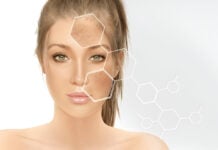When people think about skin cancer, the image that often comes to mind is melanoma, the most dangerous type. However, the most common form of skin cancer is basal cell carcinoma (BCC), and while it is less likely to spread to other organs, it can still cause significant harm if not treated promptly. This slow-growing but persistent cancer affects millions of people worldwide every year, making awareness and early detection incredibly important.
What Is Basal Cell Carcinoma?
Basal cell carcinoma originates in the basal cells, which are found in the bottom layer of the epidermis. These cells are responsible for producing new skin cells to replace those that are shed. When these cells become damaged, often due to ultraviolet (UV) exposure, they can begin to grow uncontrollably, forming a cancerous lesion. BCC typically appears on areas of the skin that receive the most sun exposure, such as the face, neck, ears, scalp, and shoulders (American Academy of Dermatology [AAD], n.d.).
Visually, BCC can be deceptive. It may look like a shiny bump, a pink growth, an open sore, or even a scar-like area. These lesions often bleed, crust over, and then seem to heal, only to return. Because of this, they are sometimes mistaken for harmless skin issues and left untreated until they grow larger.
Why Does BCC Develop?
The primary cause of basal cell carcinoma is cumulative exposure to ultraviolet radiation from the sun or tanning beds. UV radiation damages the DNA in skin cells over time, which can eventually lead to mutations and uncontrolled cell growth (Narayanan et al., 2010). Individuals with fair skin, light-colored eyes, and a history of frequent sunburns are particularly vulnerable. In addition, people who work outdoors or live in sunny climates have a higher lifetime risk.
Genetics can also play a role. Conditions like basal cell nevus syndrome (Gorlin syndrome) and xeroderma pigmentosum can increase the likelihood of developing BCC, even in young people. Other risk factors include a weakened immune system, exposure to certain chemicals like arsenic, and prior radiation therapy (Alam & Ratner, 2001).
A Personal Wake-Up Call
Meet James, a 61-year-old retiree who enjoyed playing golf several times a week. He considered himself healthy and rarely visited a doctor. For nearly two years, he ignored a small, reddish patch on his cheek. It didn’t hurt, so he didn’t think much of it. When it started to bleed occasionally, he visited a dermatologist. The biopsy confirmed it was basal cell carcinoma. Thankfully, it was caught before invading deeper structures, but James needed surgery that left a visible scar. He now wears sunscreen religiously and urges others to take unusual skin changes seriously.
Treatment Options
The treatment of BCC depends on the size, depth, and location of the tumor. Fortunately, most cases are treatable, especially when diagnosed early.
- Surgical excision: This is one of the most effective methods. The tumor and a margin of healthy tissue are removed.
- Mohs surgery: This technique is especially useful for areas like the face, as it removes the cancer while preserving as much healthy tissue as possible. It has a high cure rate and minimal scarring (AAD, n.d.).
- Topical treatments: Superficial BCCs can sometimes be treated with medicated creams such as imiquimod or 5-fluorouracil.
- Cryotherapy and electrodessication: These are useful for small, less aggressive tumors.
- Radiation therapy: Often used for patients who are not good candidates for surgery.
- Targeted therapy and immunotherapy: Medications like vismodegib are used for advanced or metastatic BCC (Sekulic et al., 2012).
Prevention and Monitoring
Preventing basal cell carcinoma is largely about minimizing UV exposure. This includes wearing broad-spectrum sunscreen with at least SPF 30, reapplying it every two hours, wearing protective clothing, and seeking shade during peak sunlight hours. Avoiding tanning beds entirely is also essential (Centers for Disease Control and Prevention [CDC], 2022).
Regular self-examinations can help detect BCC early. Look for new or changing spots, especially those that do not heal. A dermatologist should perform a professional skin exam once a year, or more frequently if you have a personal or family history of skin cancer.
Basal cell carcinoma may not carry the same immediate life-threatening risks as melanoma, but it is a serious condition that should not be underestimated. With early detection, treatment is usually straightforward and effective. However, neglect can lead to larger, disfiguring growths and more complex surgeries. It is a reminder that sun protection is not just about preventing sunburn; it is about preserving your health and quality of life. Take your skin seriously and don’t ignore changes. Your future self will thank you.
References
- Alam, M., & Ratner, D. (2001). Cutaneous squamous-cell carcinoma. New England Journal of Medicine, 344(13), 975-983. https://doi.org/10.1056/NEJM200103293441306
- American Academy of Dermatology. (n.d.). Basal cell carcinoma: Overview. https://www.aad.org/public/diseases/skin-cancer/types/common/basal-cell-carcinoma
- Centers for Disease Control and Prevention. (2022). Skin cancer prevention. https://www.cdc.gov/cancer/skin/basic_info/prevention.htm
- Narayanan, D. L., Saladi, R. N., & Fox, J. L. (2010). Ultraviolet radiation and skin cancer. International Journal of Dermatology, 49(9), 978-986. https://doi.org/10.1111/j.1365-4632.2010.04474.x
- Sekulic, A., Migden, M. R., Oro, A. E., Dirix, L., Lewis, K. D., Hainsworth, J. D., … & Yauch, R. L. (2012). Efficacy and safety of vismodegib in advanced basal-cell carcinoma. New England Journal of Medicine, 366(23), 2171-2179. https://doi.org/10.1056/NEJMoa1113713
- Skin Cancer Foundation. (2023). Basal cell carcinoma. https://www.skincancer.org/skin-cancer-information/basal-cell-carcinoma/












